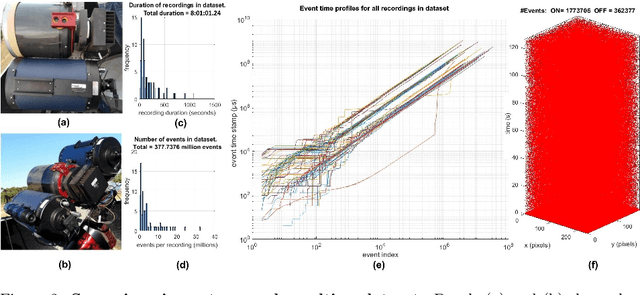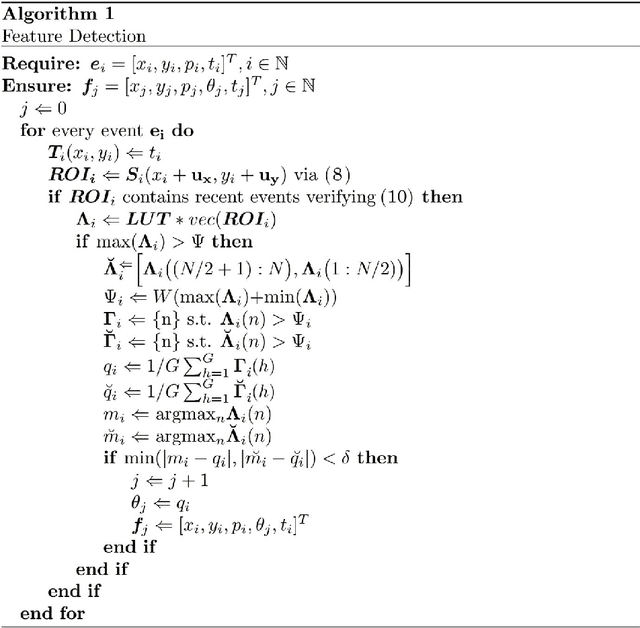Andrew P Nicholson
Event-based Object Detection and Tracking for Space Situational Awareness
Nov 20, 2019



Abstract:In this work, we present optical space imaging using an unconventional yet promising class of imaging devices known as neuromorphic event-based sensors. These devices, which are modeled on the human retina, do not operate with frames, but rather generate asynchronous streams of events in response to changes in log-illumination at each pixel. These devices are therefore extremely fast, do not have fixed exposure times, allow for imaging whilst the device is moving and enable low power space imaging during daytime as well as night without modification of the sensors. Recorded at multiple remote sites, we present the first event-based space imaging dataset including recordings from multiple event-based sensors from multiple providers, greatly lowering the barrier to entry for other researchers given the scarcity of such sensors and the expertise required to operate them. The dataset contains 236 separate recordings and 572 labeled resident space objects. The event-based imaging paradigm presents unique opportunities and challenges motivating the development of specialized event-based algorithms that can perform tasks such as detection and tracking in an event-based manner. Here we examine a range of such event-based algorithms for detection and tracking. The presented methods are designed specifically for space situational awareness applications and are evaluated in terms of accuracy and speed and suitability for implementation in neuromorphic hardware on remote or space-based imaging platforms.
 Add to Chrome
Add to Chrome Add to Firefox
Add to Firefox Add to Edge
Add to Edge